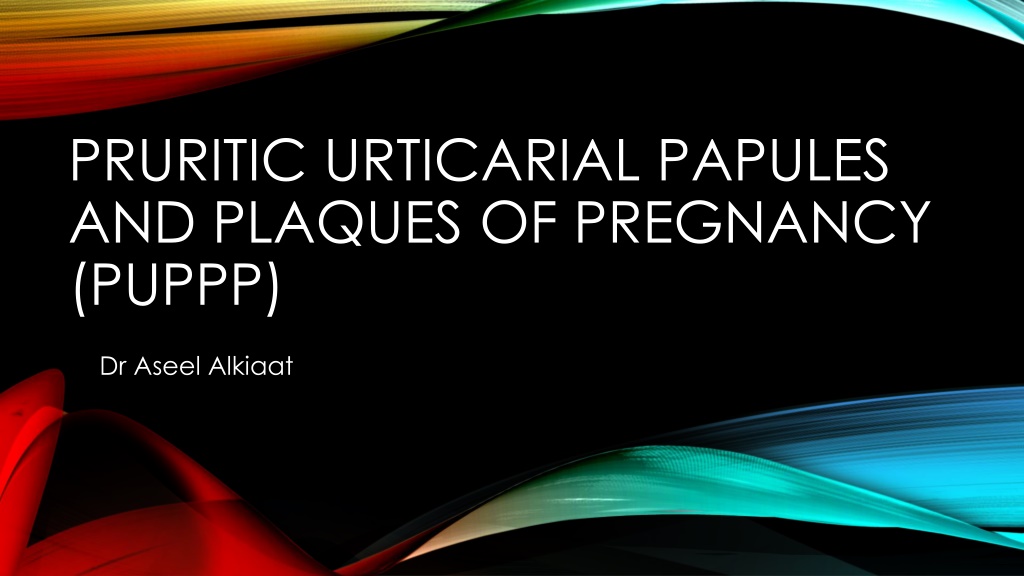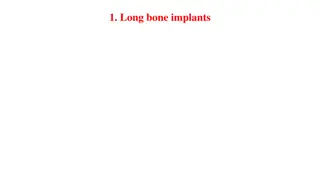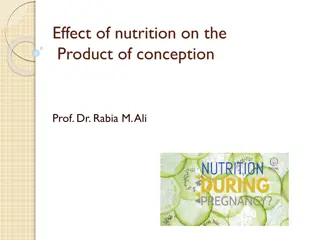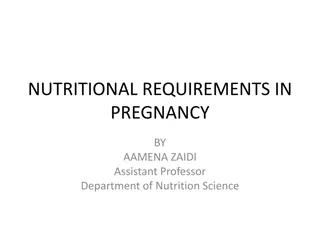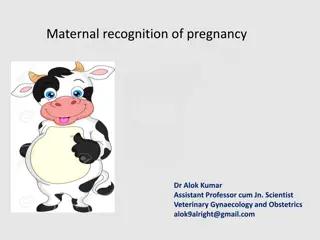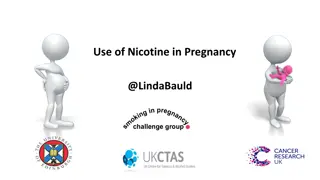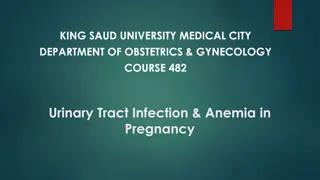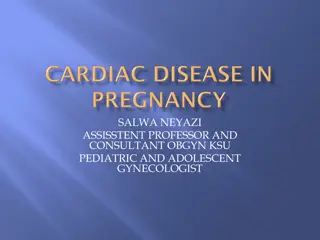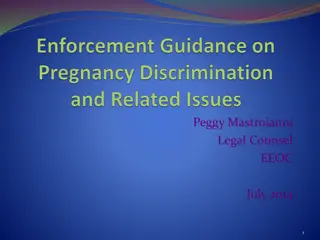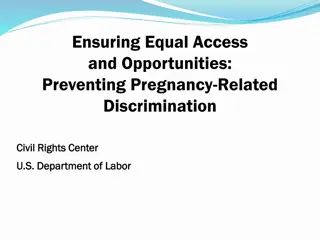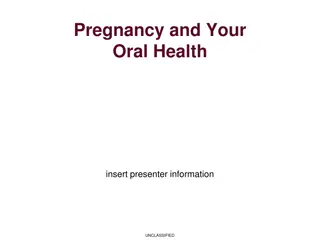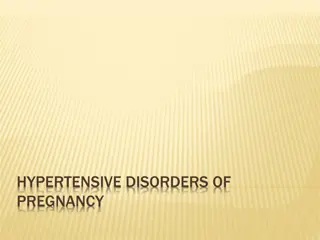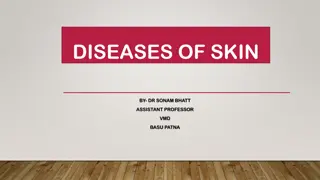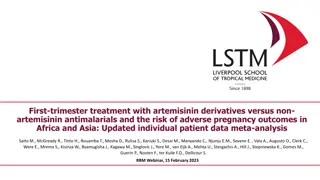Understanding Pruritic Urticarial Papules and Plaques of Pregnancy (PUPPP)
Pruritic Urticarial Papules and Plaques of Pregnancy (PUPPP) is a condition that affects pregnant individuals, typically in the late third trimester or immediately postpartum. It manifests as intensely itchy raised areas of papules and plaques mainly on the abdomen, with potential spread to other body parts. PUPPP is more common in nulliparous women and multiple pregnancies. The differential diagnosis includes conditions like pemphigoid gestationis and prurigo of pregnancy, each with its own characteristics. Management options for PUPPP include symptomatic treatment with topical or systemic steroids and antihistamines.
Download Presentation

Please find below an Image/Link to download the presentation.
The content on the website is provided AS IS for your information and personal use only. It may not be sold, licensed, or shared on other websites without obtaining consent from the author. Download presentation by click this link. If you encounter any issues during the download, it is possible that the publisher has removed the file from their server.
E N D
Presentation Transcript
PRURITIC URTICARIAL PAPULES AND PLAQUES OF PREGNANCY (PUPPP) Dr Aseel Alkiaat
CONTENTS What will be covered: Definition of PUPPPS rash Who gets it? Differential diagnosis Management options
Definition of PUPPPS Pruritic Urticarial Papules and Plaques of Pregnancy, often referred to as PUPPP It is also known as toxic erythema of pregnancy and polymorphic eruption of pregnancy It is an intensely pruritic (itchy) rash consisting of raised, edematous areas of small papules coalescing into larger plaques. The lesions may be surrounded by a lighter halo in fair-skinned patients- it looks almost like a target.
The primary site usually is the abdomen (with periumbilical sparing) then may spread to the extremities or coalesce to form hives. A close-up of a person's skin Description automatically generated with medium confidence Face, palms and soles are rarely affected. All very pruritic No effect on the foetus Three types: Type I- classic , no involvement of faces/palms/soles. Type II- maculopapular/erythematous patches with overlying papules/vesicles. Type III- an overlap of Types I and II
Who gets it? Pregnant patients, usually late in third trimester and may develop or worsen immediately postpartum period. Tends to get better by 2 weeks. Incidence 1 : 200 pregnancies 75% nulliparous 8-12 x more common in multiple pregnancies
Differential Diagnosis Pemphigoid gestationis Blistering skin disease Incidence 1: 2,000-50,000 Only occurs in pregnancy or with trophoblastic disease; can persist for years postpartum Truncal urticarial rash, spreads to palms and soles +/- vesicles; rarely face or mucous membranes 25% get better before delivery. 75% relapse after delivery- 25% with OCP Treatment includes topical steroids/ antihistamine in mild cases, systemic steroids usually helpful. Foetal risks of IUGR/prematurity/ placental insufficiency.
Prurigo of pregnancy Erythematous excoriated nodules on extensor surfaces of limbs & trunk Grouped lesions- may be crusted or eczematous incidence 1:300 pregnancies Usually occurs in 2nd / 3rd trimester, occasionally the 1st trimester Usually resolves immediate post-partum period Treatment is symptomatic, including topical steroids and and antihistamines No foetal effects/ maternal risks.
Pruritic folliculitis of pregnancy Sterile eruptions of follicular papules. Mainly truncal, sometimes limbs Incidence approx. 1 : 3,000 Mainly in nulliparous, usually 2nd/3rd trimester Does not reoccur in subsequent pregnancies Symptomatic treatment Normal maternal and foetal outcomes
Pustular psoriasis of pregnancy Erythematous plaques with rings of pustules. The centre of the lesion becomes eroded. Rarely have history of psoriasis. Occurs anytime in pregnancy Rare condition Usually gets better postpartum Oral/Esophageal lesions may occur. Hands/feet/face are usually spared Not pruritic Treatment with oral steroids (high dose prednisolone) May occur with subsequent pregnancies or COCP. Associated with placental insufficiency
Management Options- PUPPPS History: exclude infection (viral illness) Diagnosis of exclusion Examination: Abdominal Striae involved in PUPPPS Nodular lesions of limbs (prurigo) Urticarial lesions or pemphigoid Investigations Exclude cholestasis of pregnancy Skin biopsy if in doubt or to confirm pemphigoid gestationis Fetal surveillance in pemphigoid, cholestasis and postural psoriasis.
Treatments: Usually symptomatic treatment Topical corticosteroids are considered the first line of treatment for PUPPP oral antihistamines systemic glucocorticoids if inadequate response to topical therapy Provide reassurance and support reassure it is not a serious illness and it will resolve with no maternal or foetal effect.
